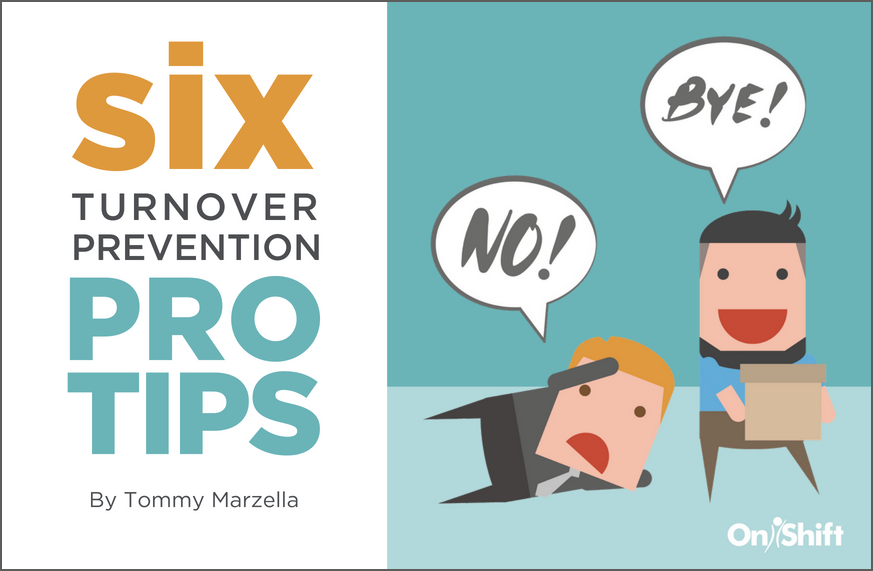 Employee turnover in senior care is a big problem, to put it lightly. Why? Well, 64% of new hires in senior care turn over within the first six months of employment, costing organizations, on average, $3500, per fleeing employee. And let’s not forget to mention the time and energy it takes to find and train replacements.
Employee turnover in senior care is a big problem, to put it lightly. Why? Well, 64% of new hires in senior care turn over within the first six months of employment, costing organizations, on average, $3500, per fleeing employee. And let’s not forget to mention the time and energy it takes to find and train replacements.
In her book Staying Power: Why Your Employees Leave & How to Keep Them Longer Cara Silletto, President & Chief Retention Officer of Crescendo Strategies, presents six strategies for reducing turnover that place a greater emphasis on listening to your employees.
She leads with the following example to show that employee turnover is sometimes just a side effect of a disconnect between employees and management.
A study was conducted on a truck driving company with major retention issues. While management assumed their employees were leaving because they wanted better pay, a more consistent schedule and better work-life balance, it was actually because they felt out of the loop without staff meetings, disliked the outdated hardware and software they were using on the job and felt like the company didn’t care about their safety.
She stresses the importance of surveying your employees to understand the problems unique to your organization instead of making such assumptions. Once you have a thorough understanding of the issues within your organization, you’re ready to start becoming, what Silletto refers to as, a “M-A-G-N-E-T Employer.” Here are the six steps to help you get there.
- Management Effectiveness
Does your management communicate their expectations of their staff clearly? Sometimes it’s easy for direction to get lost in translation. Training your managers set clear employee expectations ensures that everyone is on the same page. In addition, she highlighted the importance of appreciating ANY job well done. Employees love to hear praise when they’ve done a good job. Make sure your managers consistently recognize and reward all top performers.
- Attraction & Recruiting
Take a few moments to analyze your recruiting process. How are you reaching out your employees and is it effective? How long does it take from the moment they apply to their first day? Your employer brand, or how employees think and talk about your brand, is crucial to attracting new employees to your organization. Through review sites like Glassdoor, your employees are able to leave candid reviews for everyone to read. Make sure you register for an administrator account so you have the ability to appropriately respond to reviews as they come through.
- Guidance Upon Entry
For as much time as we spend trying to get candidates to walk through our door, we sometimes forget to plan out employees’ first day and week. Study after study shows that having a structured and engaging onboarding plan in place helps reduce turnover and ensures your new employee is set up for success. Make sure that you have their first day checklist ready to go with the appropriate meetings and meet and greets scheduled throughout the week.
- New Staffing Models – Take a look at your current staffing model and ask yourself – is it the most effective model in place? For example, if you have a large population who uses daycare services, it might make more sense to adjust the hours to give parents the flexibility needed to drop off and pick up their children at a time that is most convenient. By looking at common concerns and doing your best to address them during the scheduling process, you show employees you care about their work-life balance and well-being.
- Empowered Champions – You want to empower your employees whenever you can. Take a good look at their job responsibilities – are you the bottleneck in any of their activities or are you encouraging them to take leadership (when applicable)? Of course, every job function is different and certain roles have limitations. But by training your employees and learning to trust them, you’ll transform them into empowered champions who share the common goal of providing outstanding care and service to your residents.
- Trust Through Transparency – Do your employees trust you? As cliché as it sounds, trust takes a long time to build but can be destroyed in seconds. Make sure to keep your staff in the loop to provide them with relevant updates, training and business developments. Make sure to communicate staff changes and answer questions in a prompt, timely matter.
Turnover in senior care is a big problem, but the burden can be lessened with the right employee retention strategies in place. I hope you found Silletto's tips helpful and are able to put them into practice.
For additional employee retention resources, check out our Employee Engagement Toolkit. From tips on creating an employee-centered culture to strategies for designing a rewards program, we’ve got you covered.
 Employee turnover in senior care is a big problem, to put it lightly. Why? Well, 64% of new hires in senior care turn over within the first six months of employment, costing organizations, on average, $3500, per fleeing employee. And let’s not forget to mention the time and energy it takes to find and train replacements.
Employee turnover in senior care is a big problem, to put it lightly. Why? Well, 64% of new hires in senior care turn over within the first six months of employment, costing organizations, on average, $3500, per fleeing employee. And let’s not forget to mention the time and energy it takes to find and train replacements. 